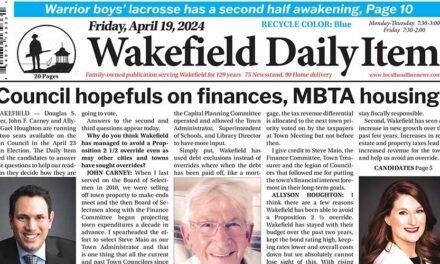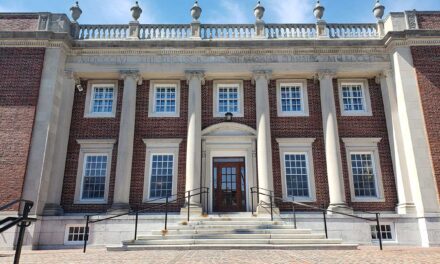By MARK SARDELLA
WAKEFIELD — The fate of two Crescent Street homes remains in limbo as the Historical Commission continues its efforts to determine if the structures are worth saving and, if so, how. The Commission last night provided an update on what they’ve learned so far.
The homes, at 17 and 19 Crescent St., are among six residences on the street owned by the Fraen Corporation. Shelter Development is in the process of acquiring those properties as well as an office building at 338 Main St. Shelter would like to demolish all of the structures to make way for a 130-unit Brightview Senior Living facility on Crescent Street. Shelter is well into the permitting process with the Zoning Board of Appeals.
As expected, at its meeting on Jan. 21 the commission invoked its power to declare a six-month demolition delay with respect to the two homes, which are listed as “significant sites” by both the Wakefield and Massachusetts Historical Commissions.
The 17 Crescent St. structure is a Federal style house built before 1784 on its original location at the corner of Main and Summer streets before being moved to its present location around 1870. The 19 Crescent St. home is a Greek Revival structure built around 1840 and was likely the first house built on Crescent Street.
The main focus last night was again on 17 Crescent St., which had once been the home of Dr. John Hart. Hart is said to have been a Revolutionary War figure who served for a time under George Washington. Locally, Hart served as Town Moderator, selectman, School Committee member and State Representative. His grave is in the old burial ground next to the Congregational Church.
Historical Commission Chairman Nancy Bertrand said last night that she was continuing her efforts to get Shelter to agree to fund an assessment of the Hart house by an historical architect of the commission’s choosing to determine how much historic fabric of the structure remains. She had put the request to Shelter’s Director of Development Michael Glynn at the Jan. 21 meeting. At the time, Glynn said that Shelter would be willing to fund an historical assessment only if the buildings were to be razed in order to determine if any historic elements were worth salvaging.
Bertrand said that she has since participated in a conference call with Shelter’s local attorney Brian McGrail and Glynn. She reported that at first Glynn remained reluctant to fund an historical assessment at this stage of the process, observing that the commission would never be in favor of the Brightview project regardless of the findings. But Bertrand told the commission that by the end of the conversation Glynn seemed at least willing to look into funding the assessment.
Bertrand said that she also asked McGrail about the possibility of commission members getting inside the Hart house. She said that McGrail agreed to get back to her after he consulted with his clients, the owners.
She said that McGrail gave her the impression that he would get back to her within the next few day with responses to those questions.
Commissioner Gene Moulton reported that he had spoken to his neighbor, who is a contractor with some knowledge of moving structures. Moulton said that he was informed that it would cost a minimum of $10,000 to move a small house a short distance. Moving a larger house a longer distance could cost up to $60,000, Moulton said.
Commissioner Daniel Benjamin pointed out that in order to determine the true cost, any estimate would have to be based on a specific house and exactly how far it would be moved.
Bertrand said that she had obtained the names of several companies with experience in moving historic structures.
Commissioner Juliane Gerace said a company she called said that it would be impossible to give an estimate without seeing the house inside and out to determine if it was even moveable.
Bertrand passed around a list of town-owned lots that she had obtained from Director of Assessments Victor Santaniello. The commission plans to visit some of the parcels to see if they would be suitable relocation sites for the Hart house. Commissioners also wondered about a lot at the corner of Eaton and Pleasant streets that is currently the site of a condemned house.
Bertrand stressed the need to get inside the Hart house with a trained historical consultant to determine what can be done to save the house and if enough of the original character remains to make it worth saving. She said that the house is known to have been divided into three apartments. She suggested that the commission might be pleasantly surprised to find that a lot of the home’s historic character remains.
Bertrand said that an ideal scenario would involve someone coming forward with both an interest and the means to preserve the house. But if it were left to the commission to raise the money to save a house with little of its original historic character left, she said, that would be a matter that the commission would have to discuss.
The Commission plans to meet again on Feb. 18 at which time they expect to have gathered more information.




